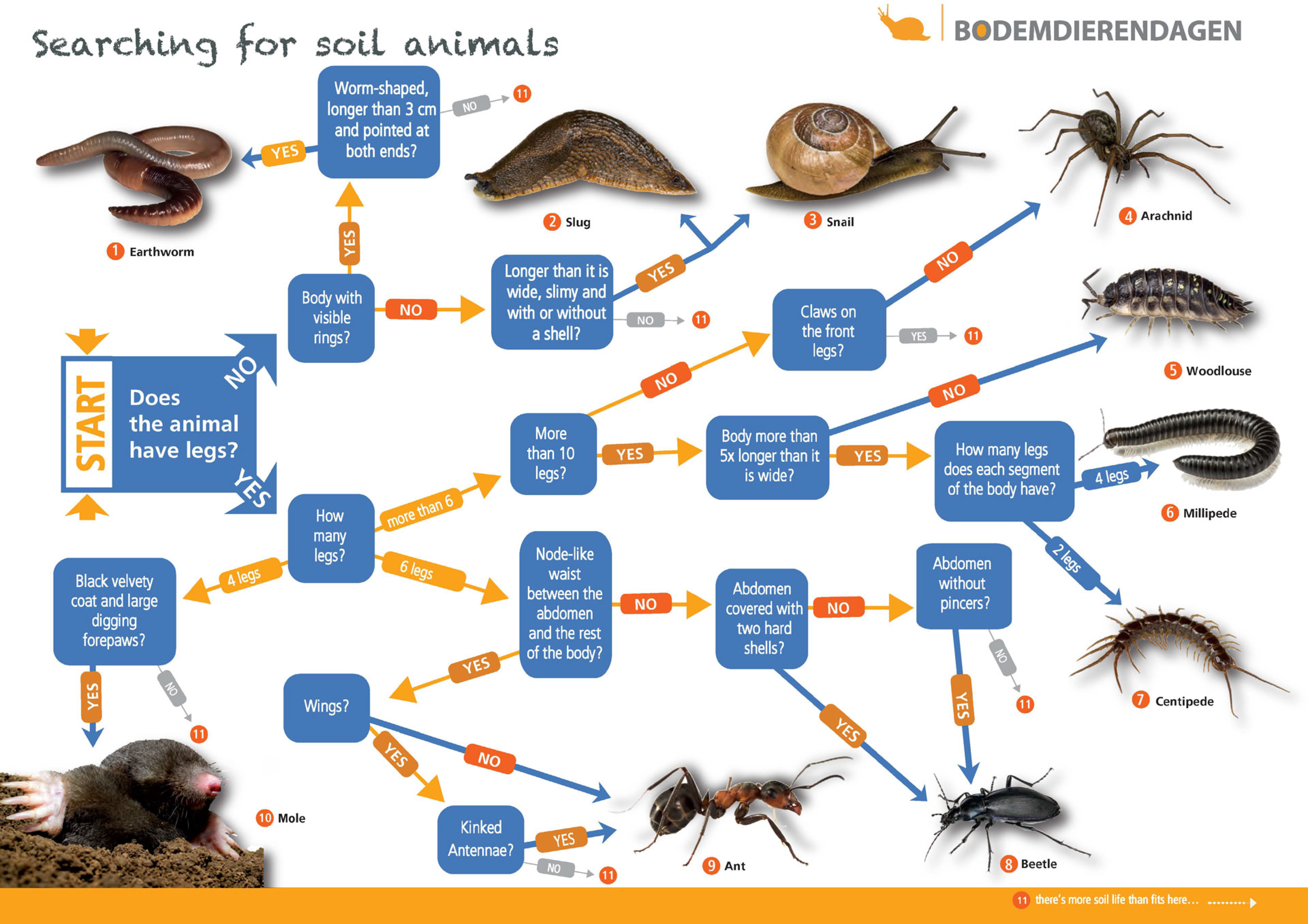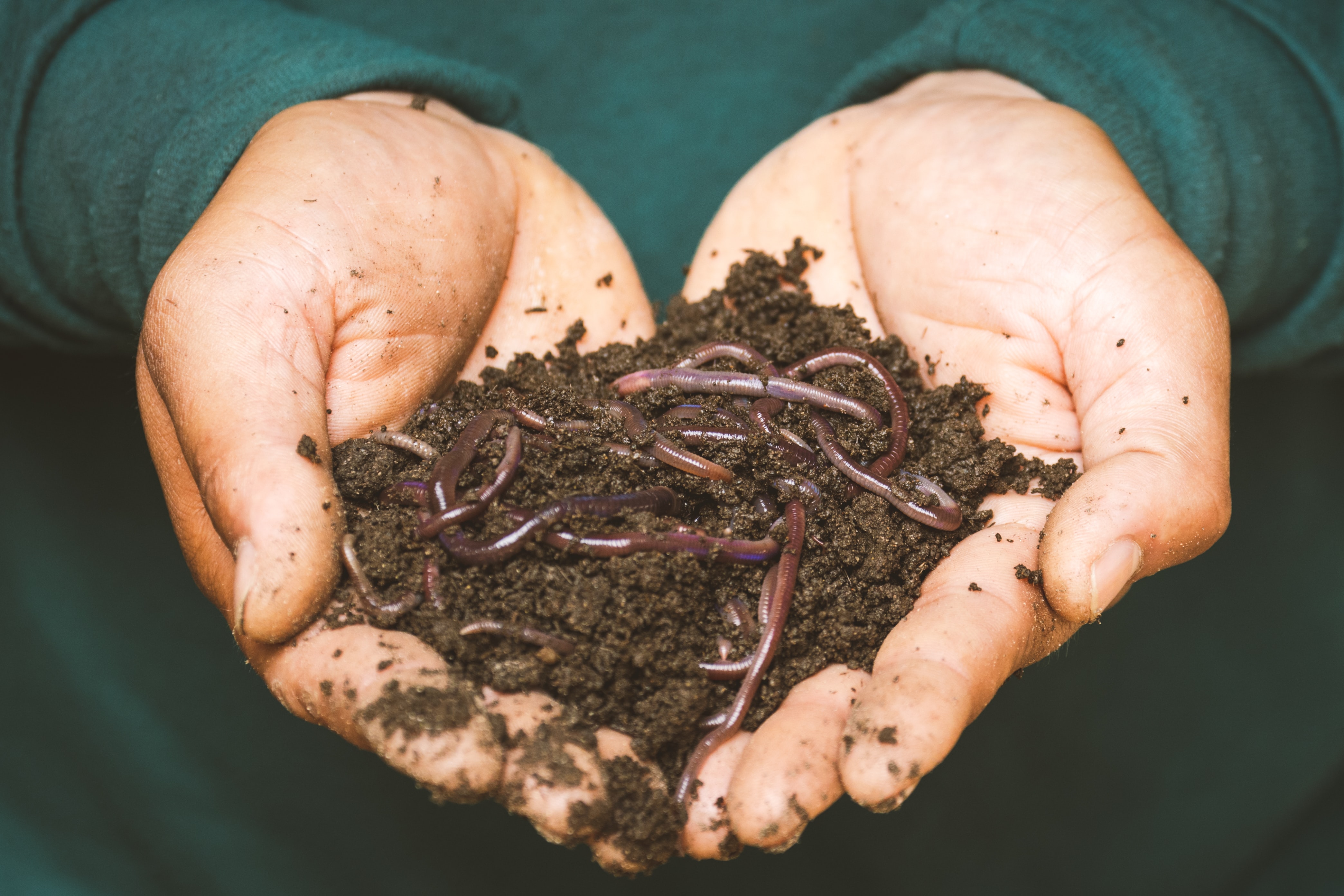Soil animal days
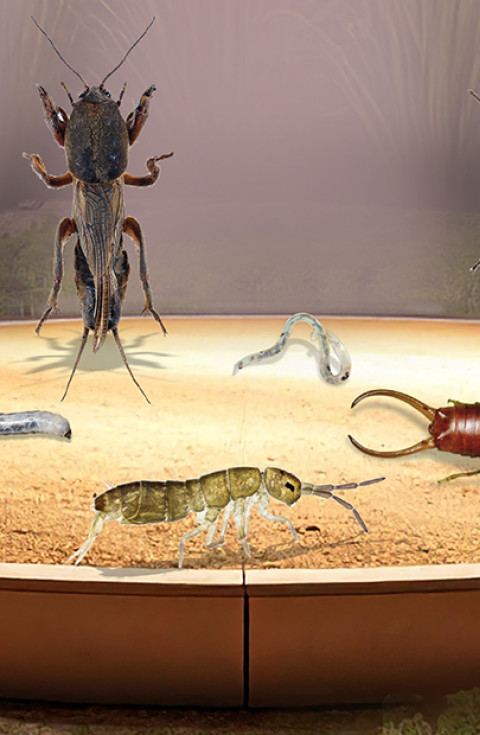
Every year around World Animal Day, we go on safari in our own gardens looking for the important but often overlooked soil animals. This year marks the 11th edition of the Soil Animal Days. The annual event organised by a growing number of partners, is now welcoming observations all year round and also from countries outside the Netherlands!
First held in 2015, the Soil Animal Days are an annual citizen science project organised by the Netherlands Institute of Ecology (NIOO-KNAW) together with Wageningen University, the National Centre of Soil Ecology (NCSE) and a growing number of partners. Soil animal experts from NIOO, Wageningen UR and Amsterdam's VU University are responsible for drafting the special soil animal chart that participants can use for their observations.
Every year in or around September and October, people all over the Netherlands go out into their gardens, and entire classes go exploring their schoolyard. Recently, observations from other countries are possible as well. So if you have access to a garden, park or schoolyard, you can join our citizen science project by downloading the chart from this website and looking for soil animals.
The project's results help scientists establish how well soil animals are doing in cities and towns. Without a healthy number of soil animals, there can be no healthy soil - and that would have grave consequences for food production and biodiversity, among many other things.
Earthworms vs woodlice
Some years turned out to be a year of extremes, especially weatherwise: dry for a long time, or on the contrary very wet. This latter may be to the earthworm's advantage and the woodlouse's detriment, suggests woodlice experts from the Soil Animal Days. "The weather indeed plays tricks on the woodlice. They cannot tolerate drought very well."
Earthworms, therefore, were the overall winners after a number of years in which the woodlouse was the odds-on favourite. Meanwhile, the number of human participants are significantly higher than before. "These are truly Soil Animal Days XL", says organiser Gerard Korthals from Wageningen UR and previously the Netherlands Institute of Ecology (NIOO-KNAW).
Between them, the participants counted an unprecedented 30,000 soil animals last year. After ten editions of the Soil Animal Days, this now brings the total number of soil animals found and counted to more than 134,000.
Overall conclusions
So are there any general conclusions to be drawn after ten years of Soil Animal Days in the Netherlands? Gerard Korthals and his fellow soil researcher Ron de Goede answer in the affirmative. "Green and half-green garden, and parks and public gardens, are eldorados for earthworms, snails, spiders and woodlice in particular." These groups of soil animals are found in more than 80% of the gardens belonging to one of those types.
Another conclusion is that the weather is indeed an important factor when it comes to the survival and level of activity of soil animals. In 2017, arachnids came out on top after a wet season while in 2018 - a dry year - there were lots of woodlice and few slugs. "We can conclude that in dry years, in particular, the type of garden and the way in which it is maintained are key factors for the survival of soil animals in the city."
So how about the future? Will 2025 be another unusual year for soil animals? Find out with us between 26 September and 8 October, when the Soil Animal Days return for the eleventh edition!
News
-
Earthworms winners of humid 2023 & Leeuwarden bags the title Soil Animal City of the Year
Spring has started in the Netherlands, and that means our soil life is very active again. How much do we know of the creatures living under our feet? That is where the citizen science project of the Soil Animal Days comes in. What did the results of 2023 show us? Earthworms like wet weather and managed to retain their position in the national soil animals Top 3: they were spotted in 87% of gardens. And in Leeuwarden, people searched for soil animals with such enthusiasm and a clear focus on the importance of soil animals that the Frisian capital may proudly call itself Soil Animal City of the Year.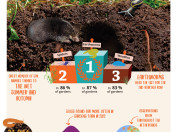
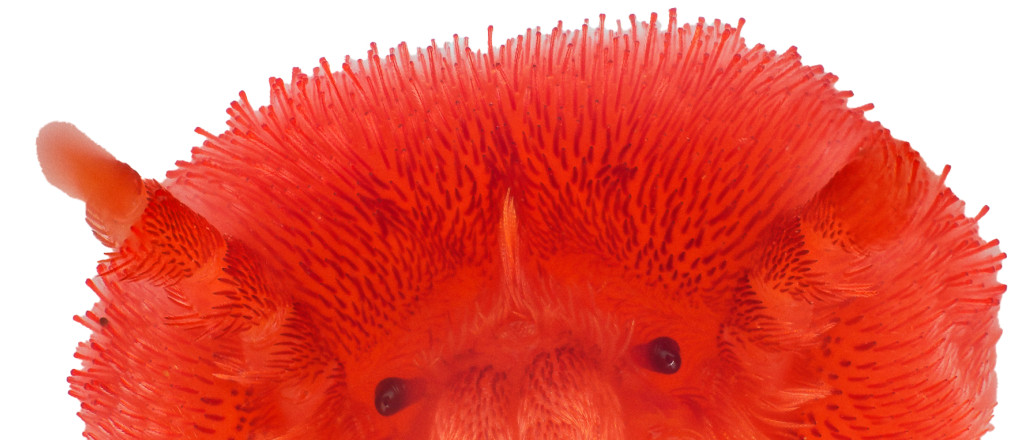
Wat doe jij terug voor de bodemdieren? Vertel het ons en ontvang het feestelijke boekje Ondersteboven

